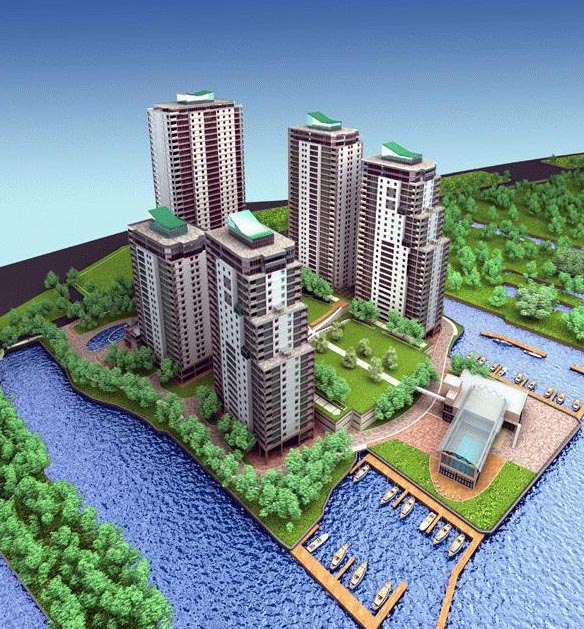W
wyliepoon
Guest
I know how sensitive some people get when discussing other cities' skyscraper boom, but here goes...
From Architectural Record:
Link to article
Philadelphia Growing Up with a Slew of High-Rise Projects
November 28, 2005
Until the 1987 opening of Murphy/Jahn's 945-foot One Liberty Place, Philadelphians passionately defended an unwritten agreement limiting city building heights to below the hat topping the statue of William Penn atop City Hall. By 1991, four years after One Liberty Place opened, seven other office towers transgressed the agreement, with fairly pedestrian designs, even for conservative Philadelphia. In the 15 years since, not one new building has risen above William Penn. This situation is now ending. Big time.
Ten new towers, mostly high-end offices and luxury condos, are now under construction. Most not only push this primarily low-lying city skyward, but reimagine its predominately aristocratic architecture and brick structural aesthetic with transparent and dynamic forms. Cesar Pelli, FAIA's nearly completed, 435-foot Cira Centre, a 28-story, blue-glass-prism office building near 30th Street train station, already alters the city's skyline and mirrors the cloudscape. Once it is completed in 2007, Robert Stern, FAIA's 57-story, 975-foot, crystal-like obelisk, the Comcast Center, will be the tallest building between New York and Chicago. (Stern is also designing a high-rise condo on Center City's Rittenhouse Square.) Solomon Cordwell Buenz's 43-story, tubelike glass condo complex, The Murano, will be one of the area's tallest-ever residences, and Wallace Roberts & Todd's five-tower Waterfront Square complex will be the first of many residential projects slated for the city's once-all-industrial Delaware River waterfront.
Twenty other towers are planned, including Handel Architect's 485-foot, 44-story condo building dubbed the Residences at the Ritz-Carlton, and Richard Meier, FAIA's 41-story, 608-foot Mandeville Place, a lithe, glass condo tower that will rise along the recently completed Schuylkill River Pathway.
Driving this downtown makeover, explains AIA Philadelphia Executive Director John Claypool, are two key forces: companies wanting iconic headquarters, and residents wanting previously unavailable high-end housing options. While low interest rates (which are now rising) and a local real estate tax abatement have encouraged development, the condo market is mainly thriving because of increased migration into Center City from the local suburbs, and even from New York (1.5 hours away by train). Recently, 1,350 apartment and condo units opened citywide; 3,574 will open by 2008. Another 7,205 are proposed for completion by 2010.
City leaders hope that such accommodations will lure new businesses and residents to a city that has seen its population steadily decline since the 1950s.
There are no sure things, especially here, but if the current trends continue, Philadelphia, positioned between New York and Washington, and more affordable than both, could emerge as America's next boom town.

Cira Centre

Comcast Center

Mandeville Place

The Murano (Philly version)

Waterfront Square
From Architectural Record:
Link to article
Philadelphia Growing Up with a Slew of High-Rise Projects
November 28, 2005
Until the 1987 opening of Murphy/Jahn's 945-foot One Liberty Place, Philadelphians passionately defended an unwritten agreement limiting city building heights to below the hat topping the statue of William Penn atop City Hall. By 1991, four years after One Liberty Place opened, seven other office towers transgressed the agreement, with fairly pedestrian designs, even for conservative Philadelphia. In the 15 years since, not one new building has risen above William Penn. This situation is now ending. Big time.
Ten new towers, mostly high-end offices and luxury condos, are now under construction. Most not only push this primarily low-lying city skyward, but reimagine its predominately aristocratic architecture and brick structural aesthetic with transparent and dynamic forms. Cesar Pelli, FAIA's nearly completed, 435-foot Cira Centre, a 28-story, blue-glass-prism office building near 30th Street train station, already alters the city's skyline and mirrors the cloudscape. Once it is completed in 2007, Robert Stern, FAIA's 57-story, 975-foot, crystal-like obelisk, the Comcast Center, will be the tallest building between New York and Chicago. (Stern is also designing a high-rise condo on Center City's Rittenhouse Square.) Solomon Cordwell Buenz's 43-story, tubelike glass condo complex, The Murano, will be one of the area's tallest-ever residences, and Wallace Roberts & Todd's five-tower Waterfront Square complex will be the first of many residential projects slated for the city's once-all-industrial Delaware River waterfront.
Twenty other towers are planned, including Handel Architect's 485-foot, 44-story condo building dubbed the Residences at the Ritz-Carlton, and Richard Meier, FAIA's 41-story, 608-foot Mandeville Place, a lithe, glass condo tower that will rise along the recently completed Schuylkill River Pathway.
Driving this downtown makeover, explains AIA Philadelphia Executive Director John Claypool, are two key forces: companies wanting iconic headquarters, and residents wanting previously unavailable high-end housing options. While low interest rates (which are now rising) and a local real estate tax abatement have encouraged development, the condo market is mainly thriving because of increased migration into Center City from the local suburbs, and even from New York (1.5 hours away by train). Recently, 1,350 apartment and condo units opened citywide; 3,574 will open by 2008. Another 7,205 are proposed for completion by 2010.
City leaders hope that such accommodations will lure new businesses and residents to a city that has seen its population steadily decline since the 1950s.
There are no sure things, especially here, but if the current trends continue, Philadelphia, positioned between New York and Washington, and more affordable than both, could emerge as America's next boom town.

Cira Centre

Comcast Center

Mandeville Place

The Murano (Philly version)

Waterfront Square




